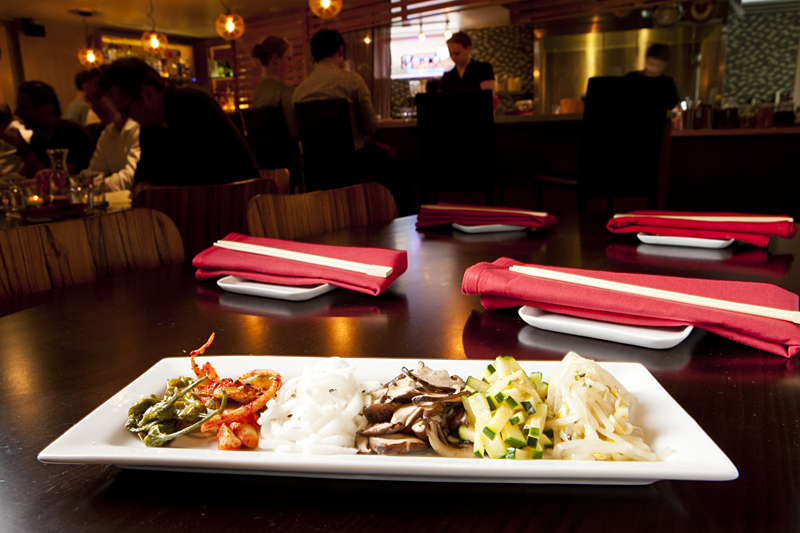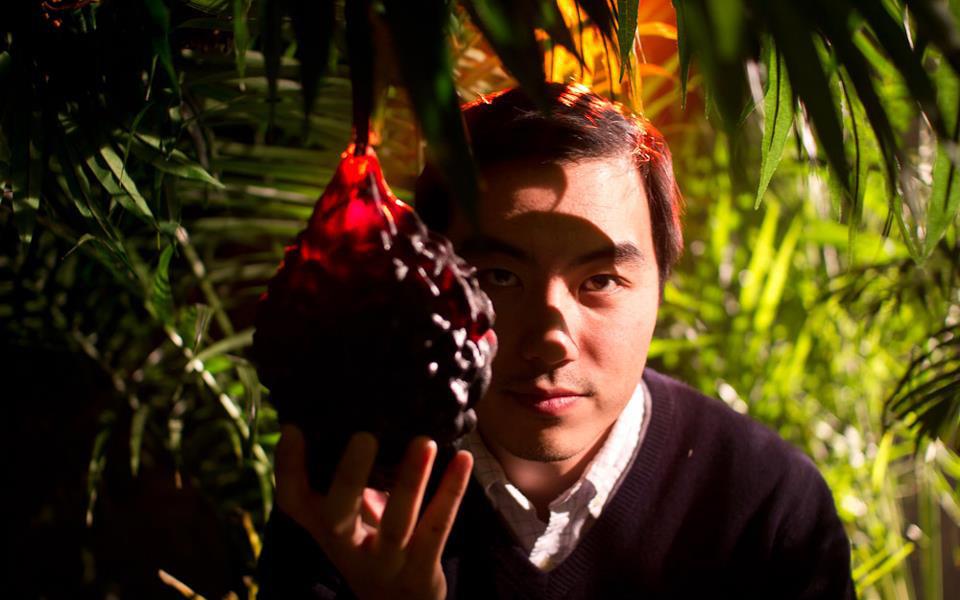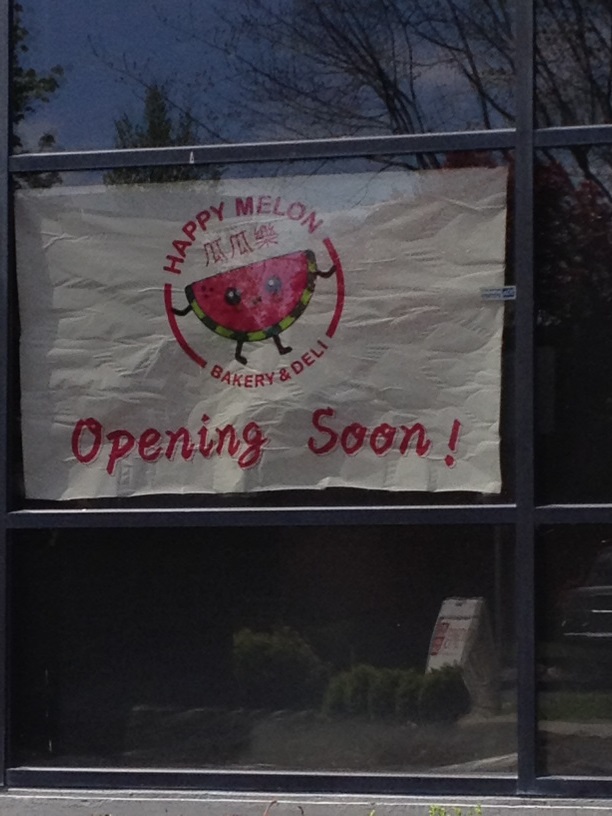I wrote a first paragraph for this review, but I don’t know if I’m ready to share it with you. I mean, I worked pretty hard on it: All the words are spelled correctly, and the grammar’s impeccable. It looks great on the page, and there’s a simile in the second line that would slay you. And if you’re a fool for alliteration, wait till you get a gander at the internal rhyme scheme near the end.
Listen, can I be honest here? I’m feeling a little insulted that you want me to just give away prose of this caliber. I know the rest of the story won’t make much sense without its lead, but still, I’m charging nothing for this? The whole business devalues the writing profession, wouldn’t you say?
So I’m withholding my brilliant first paragraph, much the way that Chan—a self-proclaimed “modern Korean fusion” restaurant that opened this spring alongside Pike Place’s Inn at the Market—won’t bring banchan to the table unless guests pledge three bucks to Korean Foster Care. That’s not a suggested donation: It’s the mandated price, listed on the menu.
Assigning a charitable fee to banchan flips the meaning of the snacks, which are typically given freely and generously as a signal of hospitality. It’s not unusual for a Korean restaurant to present its guests with six to eight complimentary stainless-steel bowls brimming with tangles of spicy mung bean sprouts, shredded dried squid, cubes of snow-white pickled radish, and braised potatoes. When a bowl’s emptied, it’s returned to the kitchen for a refill. Chan, by contrast, serves a rectangular white plate set with two dainty chopstick scoops apiece of whole shishito peppers, marinated mushrooms, carrots, zucchini, and sprouts. No seconds.
Every nibble on the vegetable tray is attractive and fresh, but the decision to charge for the mini-spread is bound to flummox eaters accustomed to Korean traditions. And since it seems unlikely that eaters new to Korean cuisine would even ask for banchan, the cognoscenti are the de facto audience. Chan might have opted to dispense with the banchan format entirely, but the restaurant’s not that daring. “Modern” here doesn’t denote an inventive rewrite of Korean culinary idioms, but the scaling-back of strong flavors and downsizing of plates.
Chan serves graceful, tasty food, but it’s positioned on a wide swath of middle ground that few diners ever traverse. The stylish restaurant is too trendy for purists, who’d rather get their Korean fix in Shoreline or Federal Way, where the banchan’s plentiful and the entreés are cheap. It’s too staid for food geeks, who want their meals seasoned with challenge, and probably too strange for tourists whose Asian food experiences extend from won ton soup to California rolls. “Did it taste . . . different?,” a server asked concernedly when I indicated she could clear a dish that wasn’t scraped clean. By trying to make itself acceptable to anyone (chef/owner Heong Soon Park makes kimchi without fish sauce and pancakes without gluten), Chan risks alienating everyone.
For eaters who can dismiss their preconceptions, however, Chan’s a terrific sip-and-nosh hideaway, a near-windowless refuge from the bustling Market beyond. The restaurant has no intention of becoming a chef-driven powerhouse à la Revel, the restaurant to which detractors will inevitably compare it, but it’s a strong pick for happy hour or a casual supper. The cocktails are excellent, and pair splendidly with dishes propped up with just enough garlic, chili, rice vinegar, and soy to remind patrons that downtown’s woefully short on Korean restaurants of any kind.
The chipper servers will happily bring a full dinner’s worth of small plates, but Chan’s compact tables can’t accommodate more than two or three at a time. The 38-seat restaurant is tiny, although the dimensions read as classy rather than cramped (so classy, in fact, that when a scheduled review partner realized she’d have to bring her toddler to dinner, we decided to eighty-six our reservation). Furnished with slatted wooden walls and willow branches wriggling out of squat ceramic vases, the L-shaped dining room hugs an open kitchen that doubles as the bar.
Chan has devised a number of cocktails presumably intended to introduce American-born eaters to the Korean liquor cabinet. Lime juice, ginger, and lots of ice cubes transform makgeolli, a fermented blend of boiled rice and water, into a refreshing drink that tastes something like banana pulp and carbonated milk. An unassailable “sojito” slaps Latin training wheels on soju, the popular rice-based spirit that’s still largely unknown in the U.S.
Park’s efforts to produce remedial versions of iconic Korean dishes are far less successful. With the volume of its chili glaze turned way down, there’s no sting to distract from the too-thick batter encircling fried-chicken wings. Fat fingers of deep-fried rice cakes, speared three to a skewer, look like square-rigged sails, but the dish isn’t going anywhere: The rice cakes are gummy, and their ostensibly chili-based sauce is unremittingly sweet.
A kimchi-bacon-paella cheese gratin is even worse than it sounds: Baked in a casserole, the congealed, pumpkin- hued rice—shrouded with a flavorless white cheese and bereft of kimchi’s defining funk—tastes like what the least popular kid on the soccer team would bring to a potluck.Yet many of the dishes on the side of the menu labeled “modern” deserve a spot on the table. Bulgogi beef sliders are sloppy, but the chili mayonnaise has pep and the meat’s tender. And so what if a pile of raw tuna and crescents of avocado soaked in soy owe more to coastal cantinas than Korean raw-beef joints? It’s a delicious cue to order another sojito.
The best dishes on Chan’s menu take advantage of the restaurant’s enviable Market location. While restaurants specializing in global cuisine often get a pass on local vegetables and humanely raised meat, Chan uses great ingredients, and really soars when it applies them to the accessible recipes that annually propel Korean cuisine to the top of coming-trends lists. Turns out sliced kalbi over rice with pickled daikon is a thousand times better when it’s garnished with a bright organic egg yolk and a bouquet of fresh microgreens. Cold buckwheat noodles in a zingy vinaigrette are the beneficiaries of a medley of cucumbers, cabbage, and red onion. And the grilled asparagus spears served with a slippery hunk of black cod flaking over a sweet wheel of daikon are just as good as the plush fish that’s the star of the plate.
Even a preparation as pedestrian as bibimbap is elevated by the addition of firm, just-plucked mushrooms and magenta radicchio. Unlike emasculated seasoning, pay-to-play banchan, and cheesy bacon, cooking up Pike Place finds in Korean fashion is an innovation well worth preserving.
Price Guide
Buckwheat salad $9
Bibimbap $11
Back cod $14
Fried rice cake $6
Pork sliders $9
Short rib $10
Sojito $8








